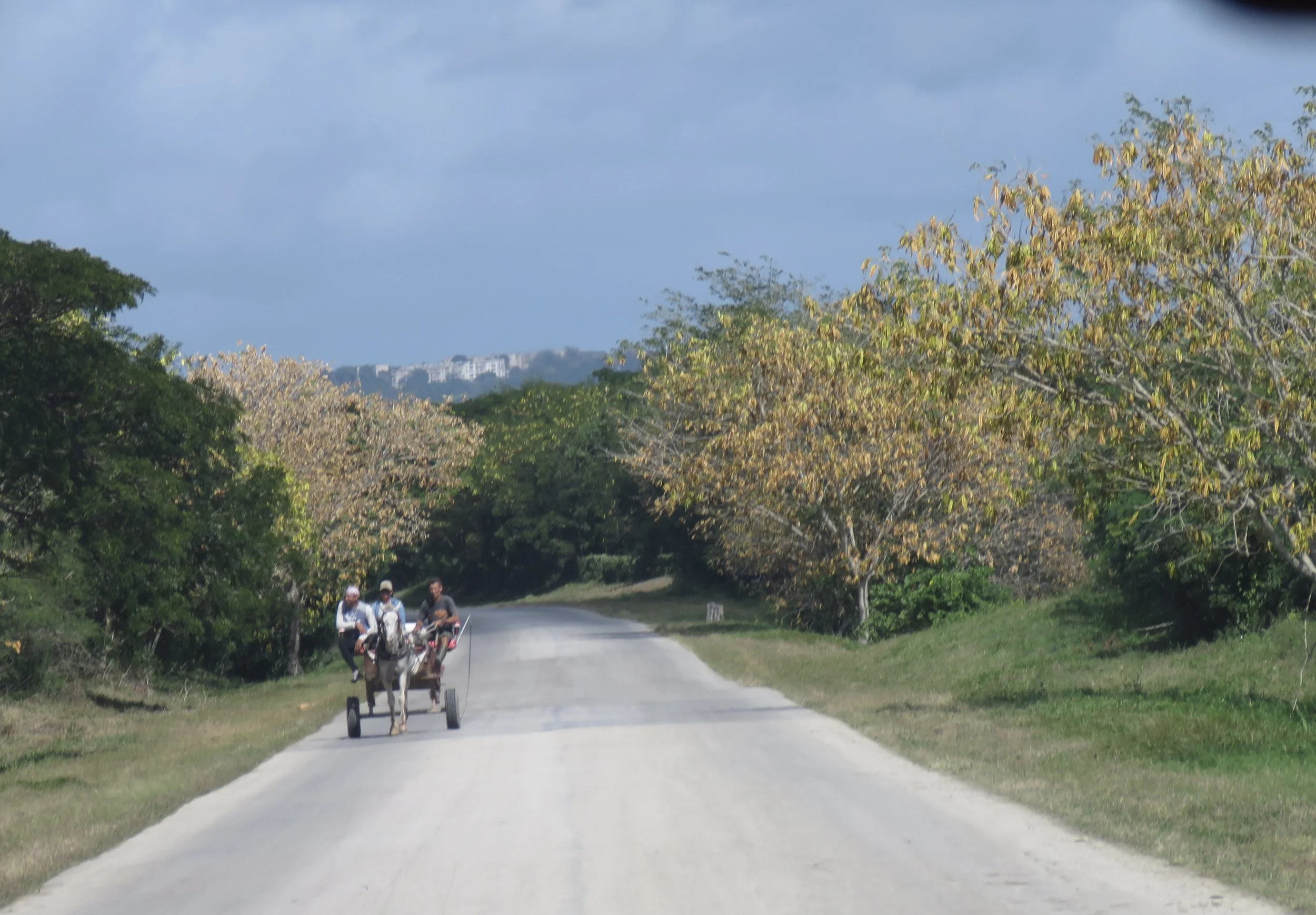Oxen carts and horse and buggies is the main traffic on major roads.
Cuba seems a country of oxymorons and contradictions… Education is free but there are not enough jobs and pay is incredibly low.
There is free health care but no medicine and almost no equipment available. We were told to bring food if you want to consult a nurse or a doctor because they are hungry.
There seems to be great equality between men and women, both at home and at work. But a huge disparaty between those who can earn US dollars, for instance in the tourism industry, and those who only make pesos.
In the 1950’s a young man named Fidel Castro declared that Cuba should belong to the Cubans. For hundreds of years, Cuba had been under Spanish rule. Ever since Columbus arrived on Cuba’s shores, in 1492, Spain had appointed Spanish rulers to the island country far away in the Caribbean. In 1511, the first Spanish settlement was founded by Diego Velázquez de Cuéllar at Baracoa. Then, in 1848, the USA tried to purchase Cuba from Spain. In the early 1900’s, the country was dominated by America to profit from the natural resources: iron, ore, tin, fruit, sugarcane and much more that could have benefitted Cubans.
The Granma…
“Enough is enough!” Castro declared and convinced many young, disgruntled people to join him in a coup. After unsuccessful attempts to overthrow the Batiste dictatorship, Castro was jailed. Upon his release he fled to Mexico from where he assembled a rag-tag army of 81 men. Castro, his brother Raul, his friend Che Guevara and the other men left Mexico piled in a small boat, to attack the Cuban army of ruling dictator Batista. Only 12 would survive. The boat they used to ‘invade’ Cuba was named Granma…
Cuba suffered from long years of fighting, attacks, and Castro’s attempt to gain more support for querilla warfare. Batiste finally fled and the rebels took over. During his early years in power, Castro tried to get financial support from the USA but that didn’t work. After the brief war at the Bay of Pigs, Cuba won the battle and the US withdrew all support to Cuba. The USSR moved in quickly to welcome Cuba as a communist state. Much of today’s crumbling architecture dates back to the days when Soviet apartment blocks were built in Cuba.
Citizens were moved from seaside villages to these Soviet style apartment buildings.
The Americans left costly equipment and investments and were so upset that they declared an embargo to make Cuba pay for all the lost equipment and infrastructure the USA had invested in the country. That embargo effectively cut off Cuba from the western world and is still in place today.
Castro, who had a law degree, declared an idealistic communism was what the country needed - everyone working together for the good of the state, and the state providing for all. He went on to serve as prime minister from 1959 to 1976. He was also the first secretary of the Communist Party of Cuba, the most senior position in the communist state, from 1961 to 2011.
Fermenting sugar cane led to the invention of Cuban rum.
Santa Ifigenia Cemetery, memorial to José Marti.
Castro grew up near, and started his rule in Santiago de Cuba. We went for a tour in the seaside city on the southern shore of Cuba. Interestingly, shortly after our visit, I came across a major article about Cuba in a National Geographic from 1999 - more than 25 years old. Yet the story read exactly as we found Cuba today. A doctor (and a university professor) makes $20.- a month - today as well as 25 years ago. Like today, food is rationed. Maybe today there will be potatoes, but no bread. Tomorrow? Who knows. When we were told, a month into our stay, that there was no bread today, we were handed a package of soup crackers - that was to be our breakfast and lunch.
We asked a couple that ran a farm about their crops. “Can you sell any surplus?” I asked. No, was the answers, we are told what and how much to grow. The state claims the crops and distributes it.
An abandoned resort
In 1991 the USSR withdrew all troops from Cuba. Today, China is investing in infrastructure and keeping its finger on the Cuban pulse.
In 2000 Cuba received some 2 million tourists. Things were looking up for those working in the hospitality industry. Resorts had been build, often with Soviet money. But Americans weren’t able to spend holidays in Cuba. And when Covid hit, the tourist industry went bust, effecting the entire country. No longer was there any income. Planes stopped coming, resorts stood empty. We were told that, under communist rule, individual initiatives crumbled. People no longer had big gardens or orchards, even though the country is so fertile. They receive a bit of rice and beans but there’s no much more to be had. We had a hard time getting a mango or a few bananas. And now, the entire infrastructure has imploded due to the Covid pandemic.
Without tourists, there’s basically no income. People are hungry and disillusioned. It’s the third generation growing up under communistic dictatorship and they not only have lost hope for the future, they also have no idea how to run things. Machinery is broken, there’s no power, no gas. Those with initiative and money, have long since left and send money to relatives who are unable to leave the country. Most motorcycles and taxis, whcih date back to the 1940’s and are meticulously maintained, are run by young men trying to make a living, but mostly owned by relatives or friends who live in the US and receive ‘rent’ in exchange.
In our next blog, we’ll take you along as we visit the city of Santiago de Cuba.
BOOKS, click here then scroll to Cuba









